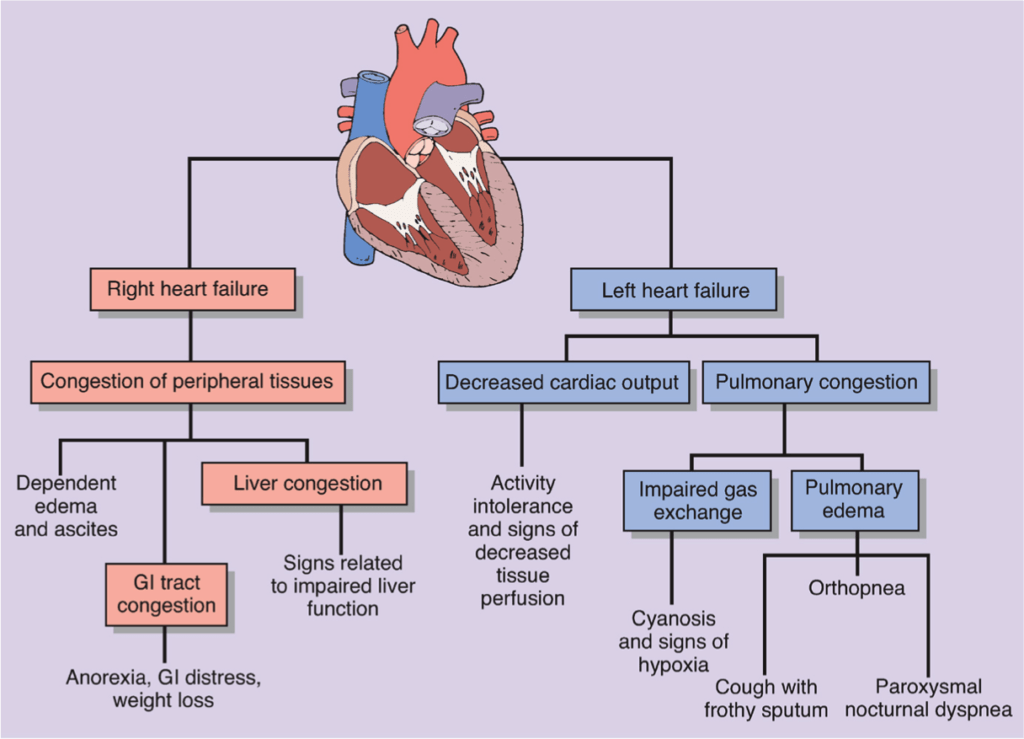We have spent a lot of time in the last several blogs on heart failure. Virtually all of these discussions have focused on left ventricular heart failure. What about right ventricular heart failure? Yes, the right ventricle (RV) can fail, too. But many of the most common cardiovascular problems—coronary heart disease, hypertension, valvular heart disease, atrial fibrillation—create dysfunction either exclusively or predominantly in the left ventricle (LV).
Interestingly, the most common cause of RV failure is . . . LV failure. As you recall from an earlier blog about the circulation, the RV pumps blood to the lungs, which returns it to the left atrium and on to the LV. Therefore, if the LV is failing, blood backs up, raising pressure in the lungs and eventually creating pulmonary hypertension. This leads to resistance to forward flow out of the RV and eventually to RV failure. Indirectly, therefore, all the causes of LV failure are also causes of RV failure.
But are there conditions that affect the RV predominantly or at least equally to the LV? One of the entities that affects both ventricles to approximately the same degree is something that we touched on a few weeks ago: restrictive cardiomyopathy. The infiltration that is seen in many forms of restriction will involve the RV as much as the LV. Thus, the manifestations of restrictive cardiomyopathy are often more of RV failure than LV failure.
Other diseases that predominantly or exclusively cause RV failure are a) lung disease of any form (lung disease leads to pulmonary hypertension), b) right-sided valvular heart disease (tricuspid regurgitation being by far the most common in adults), c) congenital heart disease—the most common cause in adults is an ASD (a hole between the left and right atria, which leads to too much blood flowing through the pulmonary circulation, eventually causing pulmonary hypertension), and d) other causes of pulmonary hypertension (which can be of unknown etiology, caused by certain types of rheumatologic diseases that affect the lungs, or chronic pulmonary emboli—clots that travel into the lung circulation). As you can see from much of the preceding discussion, pulmonary hypertension—however it develops—is the common denominator causing RV failure.

The image above shows what people experience when they have RV failure and compares it with LV failure symptoms. Pitting edema—swelling of the feet, ankles and legs that leaves a prolonged indentation when pushed on—is perhaps the most well-known manifestation. Swelling of the gastrointestinal (GI) tract leads to nausea, poor appetite, bloating and weight loss. Liver congestion can cause dysfunction of that organ—early on, this will mostly be manifested as abnormal lab tests. Not mentioned above is the fatigue that most of these patients feel. With the RV failing, it can’t pump blood adequately to the LV to pump to the body, so the organs and tissues don’t get the blood supply that they need. As you can see, RV failure may cause manifestations of LV failure, the reverse of the cause and effect I mentioned in the second paragraph.
Treating RV failure is difficult—we do not have nearly the same data on effective medicines that we do for LV failure, where beta blockers and ACEIs/ARBs are used with great benefit. Diuresis can alleviate some of the congestion, but often at the expense of worsening fatigue. The sad truth is that when RV failure occurs as a result of LV failure, the disease process is often so far advanced as to be essentially untreatable. That’s why it’s important to jump on treatment of anything that can cause LV failure.
When the cause is not from LV failure, there is greater hope. Treating the primary condition, whether it be lung disease (including: STOP smoking!) or a rheumatologic disorder, can improve the situation. For chronic pulmonary emboli, recognizing and treating it with anticoagulation (“blood thinners”) is lifesaving. Regarding other forms of pulmonary hypertension, there are now many drugs available that lower pulmonary pressures and decrease RV failure symptoms. Surgery can be beneficial in patients who have RV failure from tricuspid regurgitation or an ASD, but again it is important to correct these problems before the RV failure becomes advanced.
The right ventricle is often overlooked when thinking about “heart” problems, but failure of the RV is a serious, life-threatening situation. When recognized in time, though, we have many ways of preventing this condition. So, don’t avoid treating cardiovascular problems because you feel “fine.” Remember—an ounce of prevention is worth a pound of cure.
Greg Koshkarian, MD, FACC
